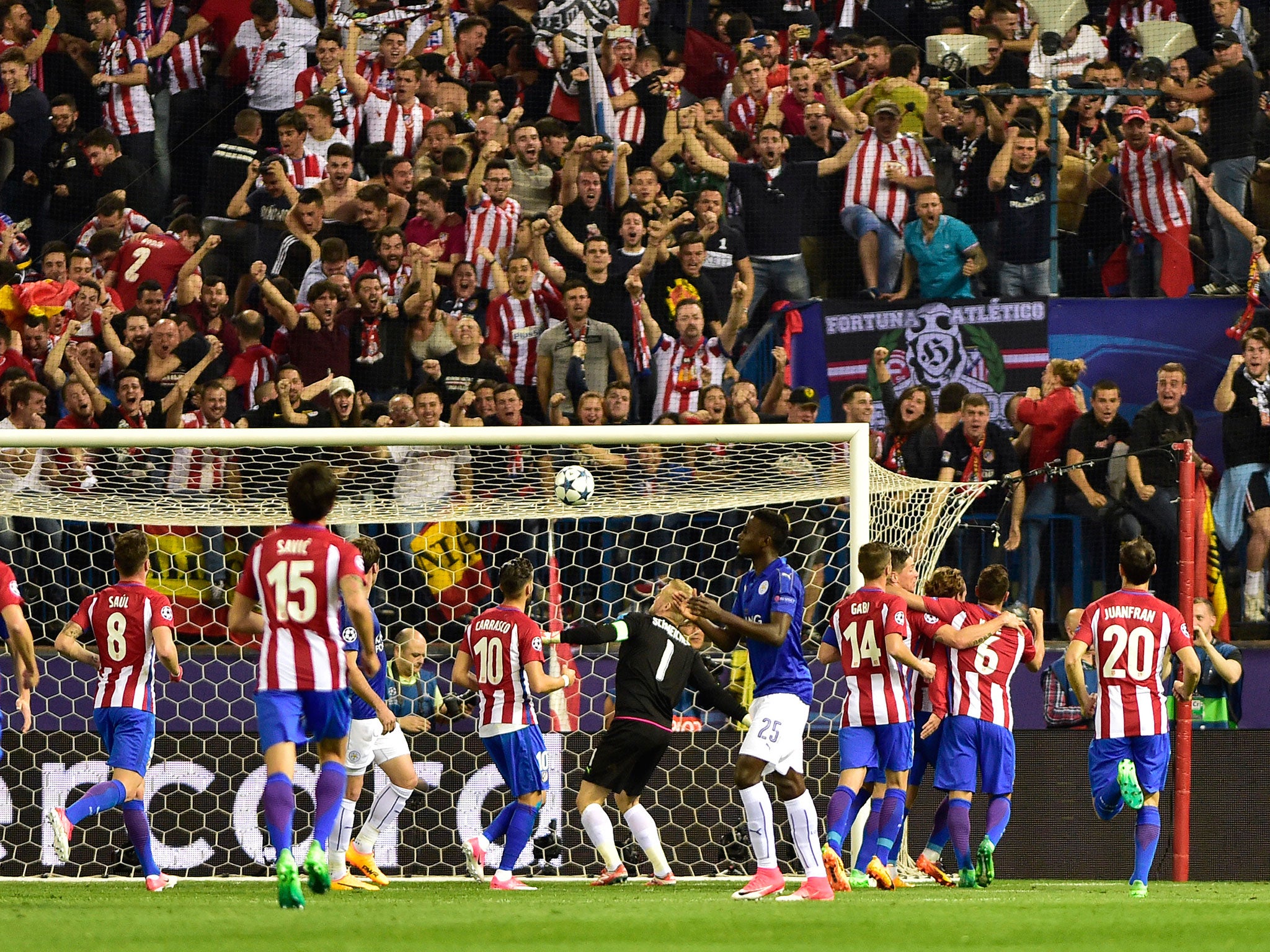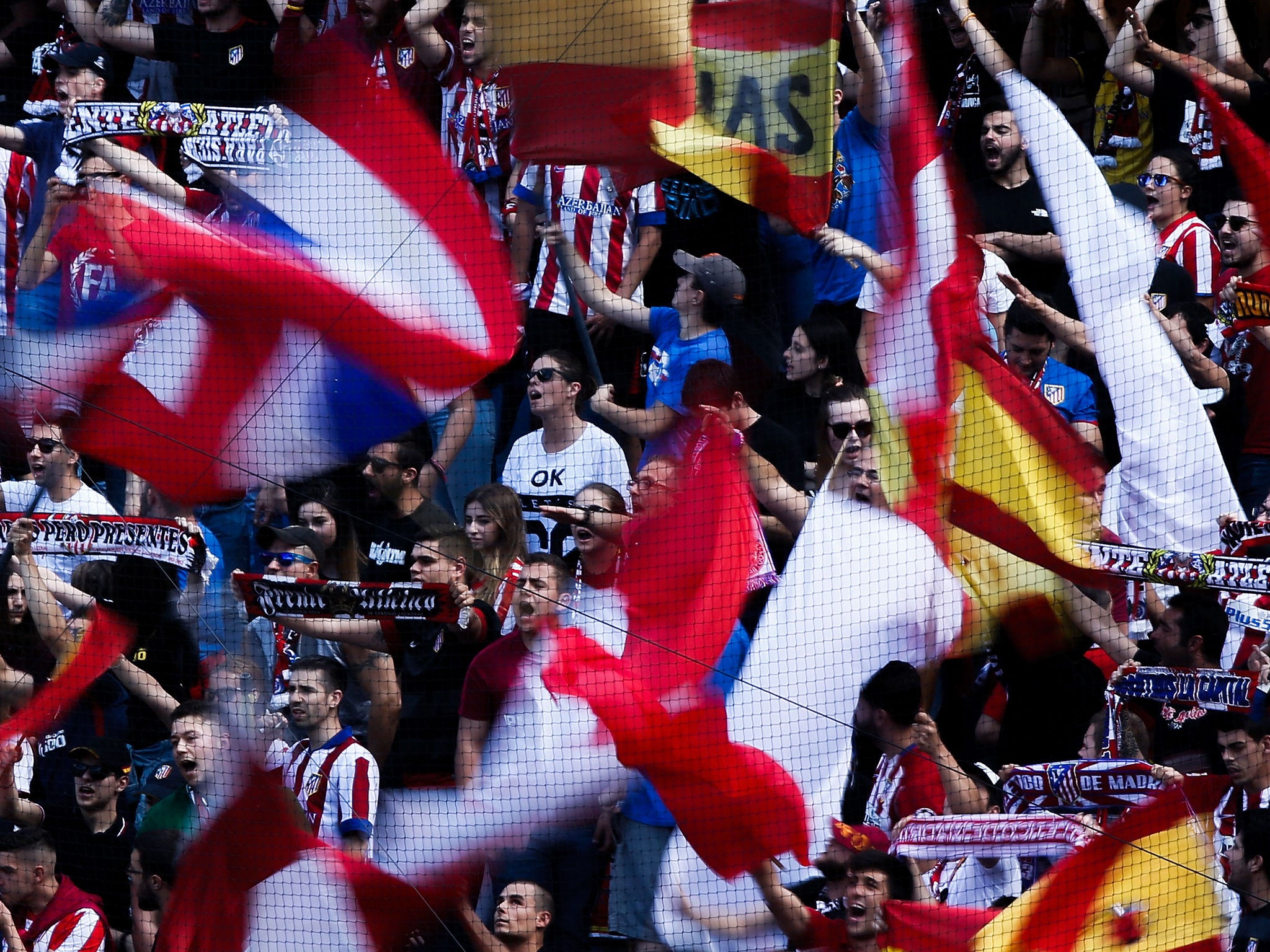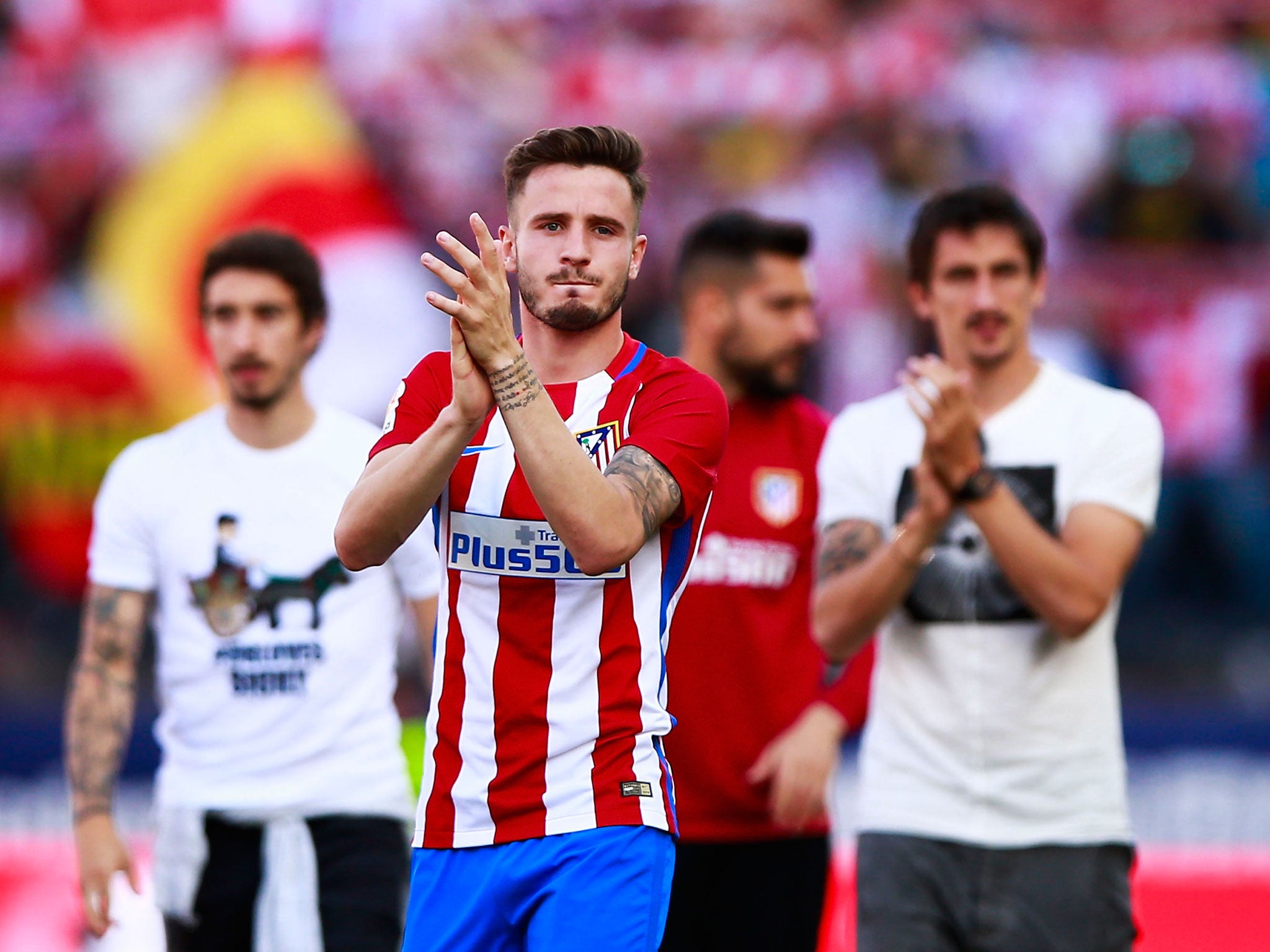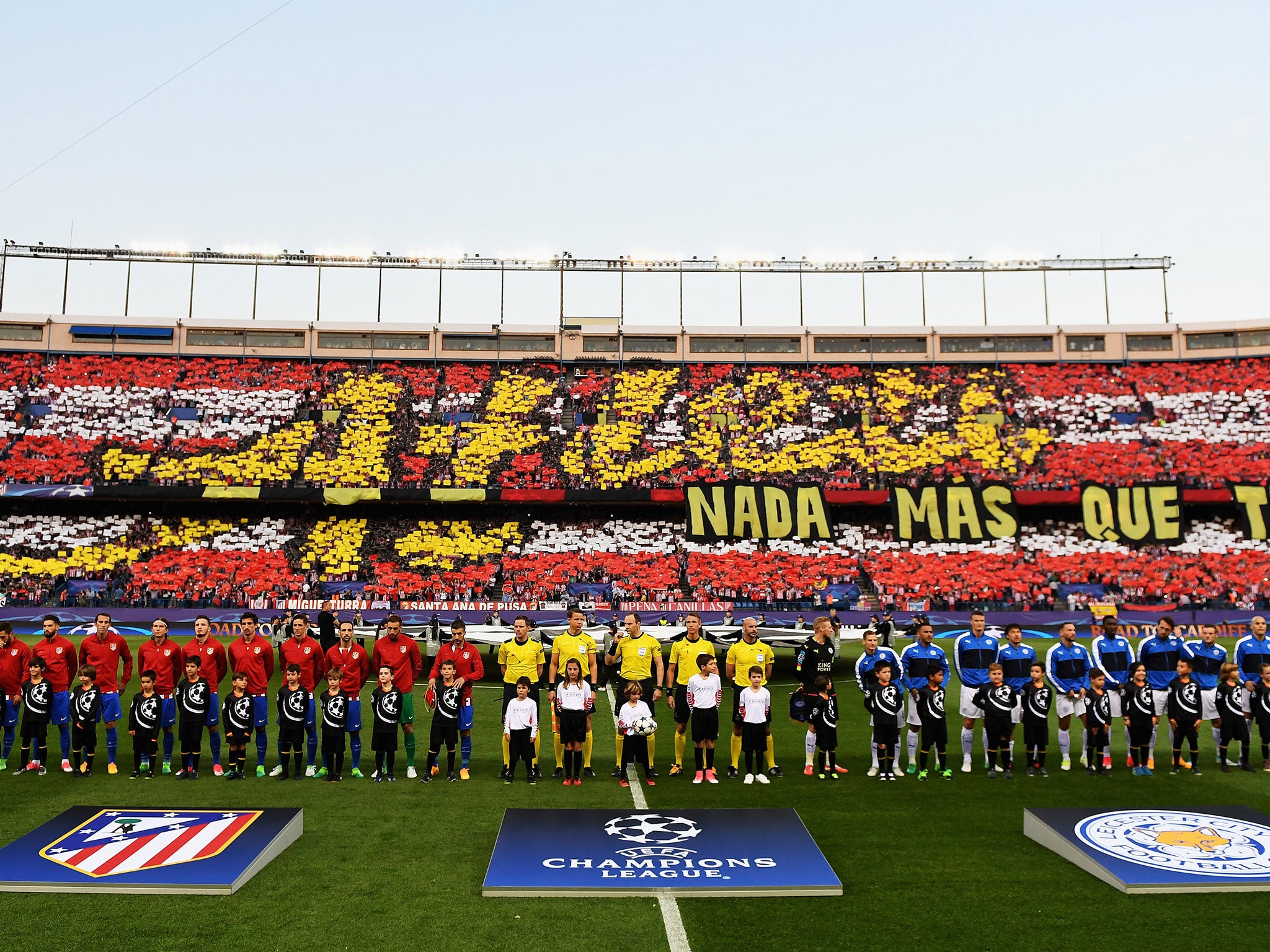Atletico Madrid turn to the Vicente Calderon one last time to inspire the unlikeliest of comebacks against Real
Ahead of the final Champions League match at the Vicente Calderon, Javier Irureta draws on the 43 years since Atletico first reach the European Cup final and what the stadium can do for Diego Simeone's side ahead of the semi-final second leg against bitter rivals Real Madrid

Your support helps us to tell the story
From reproductive rights to climate change to Big Tech, The Independent is on the ground when the story is developing. Whether it's investigating the financials of Elon Musk's pro-Trump PAC or producing our latest documentary, 'The A Word', which shines a light on the American women fighting for reproductive rights, we know how important it is to parse out the facts from the messaging.
At such a critical moment in US history, we need reporters on the ground. Your donation allows us to keep sending journalists to speak to both sides of the story.
The Independent is trusted by Americans across the entire political spectrum. And unlike many other quality news outlets, we choose not to lock Americans out of our reporting and analysis with paywalls. We believe quality journalism should be available to everyone, paid for by those who can afford it.
Your support makes all the difference.There could be no greater illustration of why the Vicente Calderon so stays in the memory, just as Atletico Madrid are set to leave the old stadium. On Saturday, after Diego Simeone’s side claimed a typically tight 1-0 win over Eibar, the home crowd gave a typical show of defiant and deafening support. Thousands of them stayed behind for a full 50 minutes, singing the club’s anthem and many other songs. It was spine-tingling, and done for a few special reasons.
The idea was not just to savour every extra second in the stadium now that there are only two matches left, but also to build a proper sense of belief - and atmosphere - about their Champions League semi-final second leg against Real Madrid, their last ever European game at the ground. At 3-0 down, they want to do everything they can to at least try and inspire a fitting comeback for the ages as the ground passes into history. The squad couldn’t but come back out onto the pitch to acknowledge it, as if almost making a promise to their fans.
So on Wednesday, as many current and former Atletico players put it, “the volcano will erupt” in European competition for the final time.
It has always offered that fire, of course. This has never been a stadium stifled by the trappings of the modern game. Javier Irureta is most famous for guiding Deportivo La Coruna to their only Spanish title in 1999-2000 but was also a key player in the first Atletico side to reach a European Cup final, back in 1973-74, and always remembers that energy to the place. It has been a constant right through the club’s history there, especially in continental competition.
“Man, what were the atmospheres on European nights like?” the 69-year-old Irureta chuckles when speaking to The Independent. “They were something else. It was a difficult stadium for visiting teams. The support would get so invested, they were so, so, so, so loud. They were so loyal, and helped the players so much.
“I’ll never forget our first European Cup semi-final, in 1973-74 against Celtic. It was when we made the leap to reach the final for the first time, and we’d come from a match that had been a battle in Glasgow. We had two men sent off, but drew 0-0, and the stadium for the second leg was so alive. We won 2-0, on a beautiful night.”
For all that fire, and the fact that Wednesday’s match will be played on a hot Madrid evening, Irureta most remembers the cold from his eight years at the Calderon.
“To be close to the Manzanares river would ensure some freezing nights, making the pitch more difficult to adapt to. We didn’t have training complexes in those days, though, so trained on two or three days a week. We were very accustomed to it. It also had those two open corners that didn’t close because of the road going through, so it was probably one of the colder stadiums. The support would warm themselves up by getting so into the night. It had its magic.”
It has also seen an awful lot in Europe: the journeys to one Cup Winners Cup trophy, two Europa League trophies, three Champions League finals, and some sensational wins like those over Gigi Riva’s Cagliari in 1970-71, Leo Messi’s Barcelona… but never one over Real Madrid. It has never seen a recovery like that required on Wednesday.
The truth is Atletico are going to need something close to sorcery - let alone magic - to try overturn Real’s resounding lead, and thereby give the Calderon a truly perfect goodbye, the ultimate response to all of the pain and suffering their neighbours have inflicted.
The likely reality of course is that Atletico will instead go out to their biggest rivals on their biggest night, but that is in a strange way just as fitting, given their idiosyncratic history of suffering so much - especially in this competition and to this opposition.

This in itself touches another angle to the discussion around the move. Atletico will move to the expanded and streamlined Estadio La Peineta near Madrid airport, but it is a newly polished arena of the gleaming type more suited to their wealthier neighbours. The somewhat uneven and rough-hewn nature of the Calderon has made it one of the most distinctive and epic big stadiums in Europe, and more in-keeping to Atletico’s earthier identity as a club, especially during the defiance of the Simeone era. It is truly a special stadium like no other, and not just for that atmosphere. There are also its dimensions, the steepness of those main stands, the openness of some ends that makes it actually look like a cauldron from some angles.

The question is whether a club like Atletico loses something when they make such a move, whether their fundamental identity is any way altered, given how linked their inherent characteristics are to the type of place they play in. The very stadium itself, after all, has helped make many of those stand-out European nights. Irureta has a deeper view of this.
“Well, I knew their old stadium [from before 1966], the Metropolitano,” he says. “It took people a while to get used to Manzanares [the Calderon], too, because it was a lot closer to the centre of the city. Now, it’s going to be a bit more outside the city.
“People get used to the special custom of going to a certain area, going to bars around the stadium full of football people. It’s the routine. It becomes ‘of the club’. You do lose something but, with the passing of time, people begin to identify with the new stadium, too; where they sit; where they meet.
“At the start, I think it will be a bit strange but, in the end, people got used to the Calderon too.”

On Wednesday, the Atletico support and players are going to have to try and create the kind of atmosphere where Real can’t possibly get used to it; where they can’t possibly settle.
Irureta has no doubt they’ll manage at least that.

“I think the fans, they’ll be spitting blood with how much they shout, because they have such a desire to beat Madrid. Madrid eluded them again in the first leg, 3-0, and it was a very strange game. They [Atletico] did nothing well, but if they score a goal early or in the first half, with the faith of the fans… we’ll see. We’ll see.”
Once it’s finished, however, we’ll probably never see or hear anything like the Vicente Calderon on this stage again.
Join our commenting forum
Join thought-provoking conversations, follow other Independent readers and see their replies
Comments